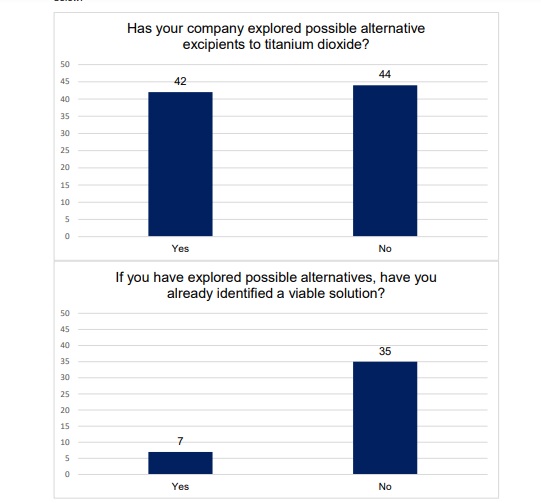The EMA expresses the complexity of replacing titanium dioxide in drugs with other substances. It could take 10 years
Don't store avocado like this: it's dangerousAs you probably already know, from 2022 titanium dioxide (E171), now used as a colorant in many products, can no longer be used as a food additive. There is only one exception: drugs, this is to avoid a dangerous shortage of drugs while waiting to find valid alternatives. The EMA has become the spokesperson for the point of view of pharmaceutical laboratories, describing in detail in a document the complexity of the issue.
As stated in the questions and answers of the European Commission on the topic of titanium dioxide:
the Regulation provides that titanium dioxide remains for the time being in the list of authorized additives to allow its use in medicinal products as a colorant. One of the reasons for this decision is to avoid shortages of medicines containing the dye as this could have an impact on public health, animal health and welfare. The replacement of titanium dioxide will also require investigation and testing of suitable alternatives to ensure that the quality, safety and efficacy of medicines are not adversely affected.
Regarding the feasibility of replacing titanium dioxide in medicines, the European Medicines Agency (EMA) expressed itself at the request of the European Commission, which invited this body to decide on possible alternatives and on what to consider in a gradual elimination of this excipient.
After the news that titanium dioxide is no longer considered safe as a food additive, several patients said they were worried about having to continue taking medicines that contain it and will also contain it in the future (it is not yet known even for how long, given that a maximum time for replacement has been announced). Despite this, pharmaceutical companies do not seem willing to quickly switch to some other alternative to this excipient.
In fact, the producers claim that titanium dioxide plays only an aesthetic role, since it is a dye and an opacifier but none of the potential substitutes (calcium carbonate or starch for example) is able to combine all its qualities.
And the Ema, in a document dedicated to titanium dioxide, actually takes their defense, highlighting the complexity of the replacement and underlining among other things that the color of the drug is important for its acceptance by the patient.
The agency also reminds that reformulation requires numerous controls (stability, dissolution, non-interference with other components, etc.) and that each new drug will have to be re-evaluated by the national authorities. A procedure that is undoubtedly complex but necessary given that we are talking about public health.
The EMA also writes that:
Considering the extent of the use of this excipient, the time and costs required for reformulation and the volume of the affected products, any obligation to replace titanium dioxide will almost inevitably lead to protection from significant shortages and shortages of drugs with serious consequences for patients.
In light of all the arguments put forward by the manufacturers, EMA estimates the time it takes for titanium dioxide to disappear permanently from drugs to be at least ten years. However, the Commission asked her to provide an updated assessment in three years, recalling that "the pharmaceutical industry must make all possible efforts to accelerate the research and development of alternatives to replace titanium dioxide in products".

@EMA
In fact, some brands have already benefited and are giving up titanium dioxide, a sign that the change is possible as well as necessary, given the dangerousness of this substance.
The problem therefore could be, as in other cases, the willingness to make a greater effort on the part of producers.
Follow us on Telegram | Instagram | Facebook | TikTok | Youtube
Fonti: EMA / What to Choose
Read also:
- Carcinogenic titanium dioxide in most of the masks analyzed, the complaint of Adiconsum Veneto
- Titanium dioxide: "carcinogenic by inhalation", from February on the label on products containing it
- E171: Mars, Lindt and Haribo say enough to use the titanium dioxide dye in nano-particles
- 2 out of 3 toothpastes contain titanium dioxide, a possible carcinogen. The French analysis


























